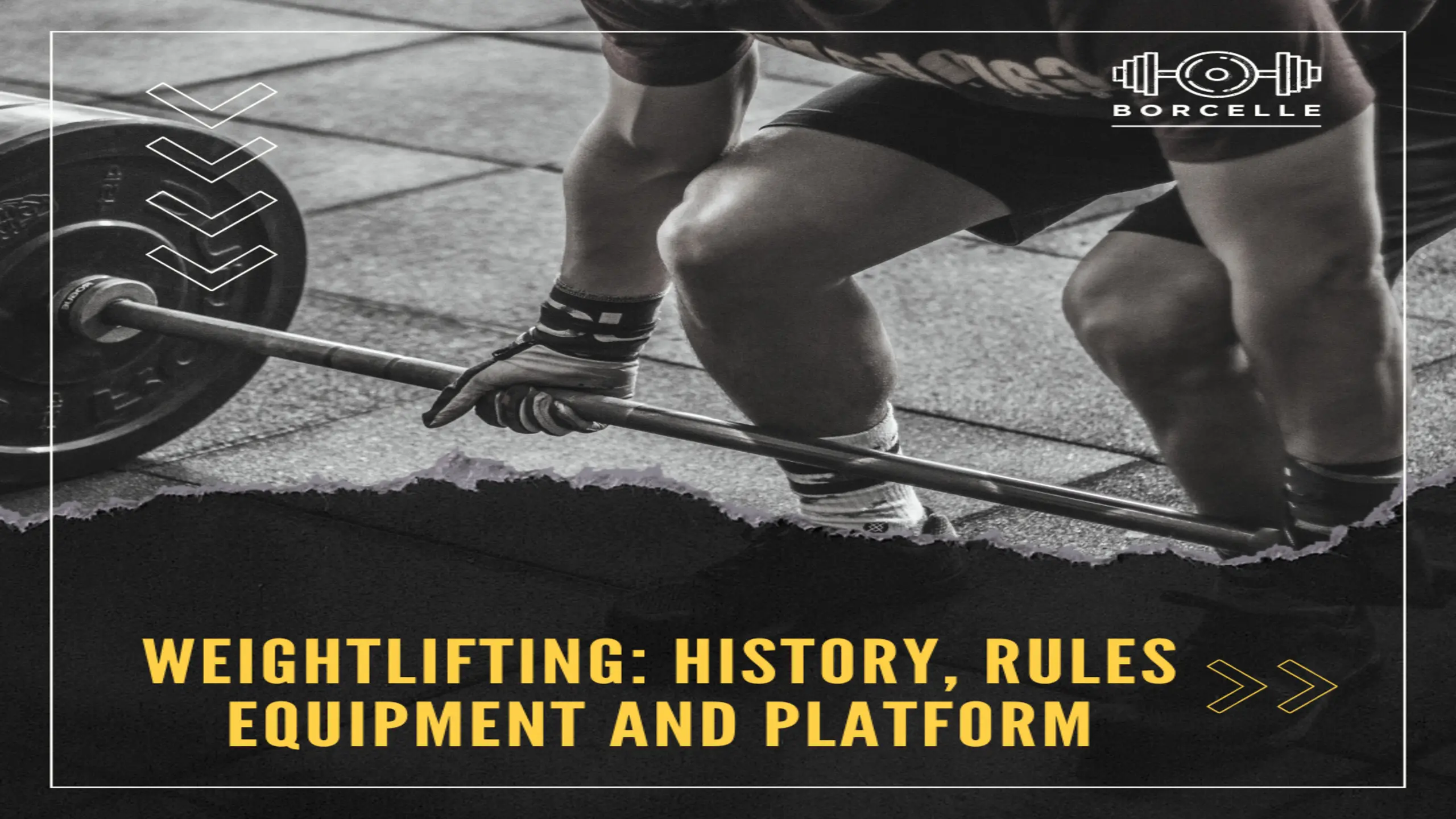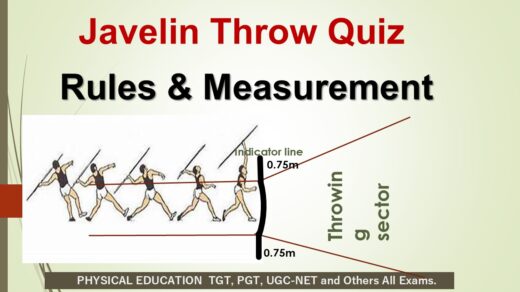Weightlifting: History, Rules and Measurements
Welcome to our blog on weightlifting! In this post, we’ll explore the history, key figures, and essential information about the sport. Whether you’re a beginner or an enthusiast, this guide will provide valuable insights.
History of Weightlifting
- Weightlifting has ancient origins, dating back to Egyptian and Greek societies.
- It became an official Olympic sport for men in 1896 (Athens) and 1904 (St. Louis), returning to the Olympics in 1920 (Antwerp) with five weight classes.
- Women’s weightlifting was included in the 2000 Sydney Olympic.
Organizations
- International Weightlifting Federation (IWF)
- Founded: 1905
- Headquarters: Lausanne, Switzerland
- Indian Weightlifting Federation (IWLF)
- Founded: 1935
- Headquarters: New Delhi
First Awardee-
- Shri A.N. Ghosh: First Arjuna Awardee (1961)
- Karnam Malleshwari: First Rajeev Gandhi Khel Ratna Awardee (1994-95)
- Jyotsna Dutta: First Woman Arjuna Awardee (1989)
Equipment and Platform
Platform Dimensions:
- 4m x 4m, Height: 10cm

Components of a Barbell
Bar–
The bar is designed to accommodate various weight discs and collars, and it has specific markings and knurling (a crosshatch pattern) to aid grip.
Weight:
Men: 20 kg
Women: 15 kg
Discs–
The discs are designed to be easily added or removed from the bar and are secured in place by collars.
Weight discs are color-coded and come in different weights:
- Red: 25 kg
- Blue: 20 kg
- Yellow: 15 kg
- Green: 10 kg
- White: 5 kg
- Smaller discs:
- Red: 2.5 kg
- Blue: 2 kg
- Yellow: 1.5 kg
- Green: 1 kg
- White: 0.5 kg
Collars–
Each barbell is equipped with two collars, each weighing 2.5 kg.
The collars are used to secure the weight discs on the barbell to prevent them from slipping during lifts.

Age Groups
- Youth: 13-17 years
- Junior: 15-20 years
- Senior: 15+ years
Weight Categories:

Olympic Weight Categories

Lifting Techniques

- The Snatch: Lifting the barbell from the ground to overhead in one continuous motion.
- The Clean and Jerk: Lifting the barbell to the shoulders (clean) and then overhead (jerk).
General Rules of Weightlifting
- Lift Execution:
- All lifts must be performed with two hands.
- A maximum of three attempts is allowed for each lift (Snatch and Clean & Jerk).
- Referee Signals:
- Lifters must wait for the referee’s signal before lowering the barbell after a lift.
- The signal is given when the barbell is held motionless in the final position.
- Lowering the Barbell:
- After the signal, the barbell must be lowered in front of the body.
- The lifter must maintain grip on the bar until it has passed shoulder level.
- Prohibited Substances:
- Use of grease, oil, water, talcum, or any other lubricants on the lifter’s thighs is forbidden.
- The use of chalk (magnesium carbonate) for grip enhancement is allowed.
No Lift Conditions
- Unfinished Attempts:
- If the barbell reaches the height of the knees but the lift is not completed, it is counted as “No Lift.”
- Barbell Handling:
- If the lifter does not wait for the referee’s signal to lower the barbell.
- If the barbell is dropped from above shoulder height or if the grip is released before passing shoulder level.
- Body Contact:
- Touching the platform with any part of the body other than the feet during the lift results in a “No Lift.”
- Any clean (lifting to the shoulders) touching the thighs or knees with the elbows or upper arms.
- Barbell Movement:
- If the barbell stops in its upward path before reaching the shoulders (clean) or arms’ length (snatch and jerk), it is declared a “No Lift.”
- Initial Positioning:
- Not facing the center referee at the beginning of the lift.
- Prohibited Techniques:
- Dropping the barbell from above the shoulders.
- Using grease, oil, or any other lubricants on the thighs is prohibited, but chalk is allowed.
Terminology in Weightlifting
- Snatch: A lift where the barbell is lifted from the ground to overhead in one continuous motion.
- Clean and Jerk: A two-part lift where the barbell is first brought to the shoulders (clean) and then lifted overhead (jerk).
- Barbell: The main equipment used in weightlifting, consisting of a long bar and weight discs.
- Discs/Plates: Weights that are added to the barbell. They come in various weights and are color-coded.
- Collar: A device used to secure the weight discs on the barbell to prevent them from slipping.
- Platform: The area where weightlifting is performed. It is usually 4m x 4m and 10cm high.
- Knurling: The crosshatch pattern on the barbell that provides grip for the lifter.
- Grip: The way the lifter holds the barbell. Common grips include the overhand, underhand, and hook grip.
- Rack: The equipment used to hold the barbell at a certain height, usually for squats or bench presses.
- PR (Personal Record): The highest amount of weight a lifter has successfully lifted in a particular lift.
- Warm-Up: Exercises and lighter lifts performed before the main workout to prepare the muscles and prevent injury.
- Rep (Repetition): One complete movement of an exercise.
- Set: A group of consecutive repetitions.
- Spotter: A person who assists the lifter during an exercise to ensure safety and help if needed.
- Chalk: Magnesium carbonate used by lifters to improve grip and reduce slipping.
- Technique: The form and method used to perform a lift. Proper technique is crucial for safety and effectiveness.
- Lockout: The final position in a lift where the lifter’s joints are fully extended.
- Max Lift: The maximum weight a lifter can lift for a single repetition.
- No Lift: A failed attempt where the lift is not completed according to the rules.
- Attempt: Each try a lifter takes to complete a lift, with typically three attempts allowed per lift in competitions.
- Hooking: This likely refers to the “hook grip,” a method of gripping the barbell where the thumb is placed under the fingers. This grip is commonly used in Olympic lifts to provide a more secure hold on the bar.
- Bounce: The act of using the momentum from the lowering phase of a lift (like a squat) to assist in the upward phase.
- Double Knee Bend: A technique in Olympic weightlifting, particularly during the clean and snatch, where the knees bend twice: once during the initial pull and again just before the final explosive pull.
- Eccentric: The phase of a lift where the muscle lengthens under tension, often referred to as the “negative” phase. For example, lowering the barbell during a bench press is the eccentric phase.
- Hang: Refers to a starting position for lifts where the barbell is held at the knees or mid-thigh rather than from the floor. Common in variations of the snatch and clean, like the “hang snatch” or “hang clean.”
- Pull: The action of lifting the barbell upwards. In weightlifting, this term is used in the context of different phases of the lift, such as the first pull (from the floor to the knees) and the second pull (from the knees to the catch position).
- Hook Grip: A grip technique where the thumb is wrapped around the bar and then covered by the other fingers. This provides a more secure grip, especially for heavy lifts.
- Swoop Up: This term isn’t widely recognized in standard weightlifting terminology, but it may refer to the swift and smooth movement of the barbell during the second pull phase of the snatch or clean.
- Straps: Lifting straps are used to help lifters hold onto the barbell when their grip strength is a limiting factor. They are particularly useful for heavy pulls or deadlifts.
- Split: Refers to the foot positioning in certain lifts, like the split jerk, where the lifter’s feet move into a lunge position to stabilize the barbell overhead.
- Bumper Plates: These are weight plates made of dense rubber, designed to be dropped safely without damaging the lifting platform or floor. They are commonly used in Olympic weightlifting.
Famous Indian Weightlifters
- Karnam Malleswari (Andhra Pradesh):
- First Indian woman to win an Olympic medal (2000 Sydney, Bronze)
- Multiple medals in World and Asian Championships
- Awards: Arjuna Award (1994), Rajeev Gandhi Khel Ratna (1999), Padma Shri (1999)
- Mirabai Chanu (Manipur):
- Olympic Silver (2020 Tokyo)
- World Championship Gold (2017) and Silver (2022)
- Commonwealth Games Gold (2018, 2022)
- Awards: Major Dhyan Chand Khel Ratna (2018), Padma Shri (2018)
Weightlifting is a sport rich in history and full of remarkable achievements. We hope this guide inspires you to explore the sport further and perhaps even take up weightlifting yourself. Stay tuned for more posts on sports and physical education.
Watch video on this topic here.
Play game Quiz here.
Download PDF




